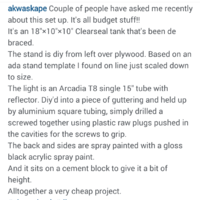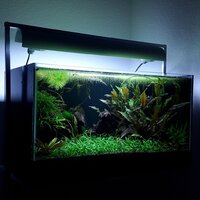Hi all,
So 100microS ~ 64ppm TDS.
You can only measure "Total Dissolved Solids" by evaporating a known volume of water to dryness and weighing the residue. You usually do this using a filter paper in the bottom of the beaker, but you need to keep the filter paper in a desiccator until the last moment (before you weigh it), or the weight tends to go down during the experiment, rather than up.
cheers Darrel
Yes. TDS meters actually measure conductivity (in microSiemens) and then use a conversion factor (usually 0.64) to give an approximation of ppm TDS.Can this be paralleled to using a tds meter which I do?
So 100microS ~ 64ppm TDS.
You can only measure "Total Dissolved Solids" by evaporating a known volume of water to dryness and weighing the residue. You usually do this using a filter paper in the bottom of the beaker, but you need to keep the filter paper in a desiccator until the last moment (before you weigh it), or the weight tends to go down during the experiment, rather than up.
cheers Darrel







